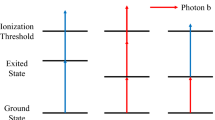Abstract
Recent trends in environmental remediation have increasingly employed the use of environmental chemistry techniques to decipher the source(s) and fate of the contaminants and, in some cases, to determine their age or apportion them to sources. An extensive database of pyrogenic and petrogenic ‘chemical fingerprints’ has been constructed by the Gas Technology Institute (GTI) and META Environmental, Inc. using gas chromatography coupled with a flame ionization detector (GC/FID) or with a mass spectrometer (GC/MS). The use of these chemical fingerprinting techniques have been highly successful in discerning wastes from wholly different sources as well as among Manufactured Gas Plant (MGP)-type wastes from different plant operations. However, these techniques have been limited when low-level polycyclic aromatic hydrocarbon (PAH) discernment is required. Specifically, these techniques often do not provide data with sufficient conclusive discriminating power between the ‘urban background’PAH sources and those from MGP-operations, which is pertinent for meeting low-level, stringent site-cleanup standards. GTI has been developing a new analytical method for the measurement of ‘urban background’ PAH contamination. This method measures the compound-specific isotope ratio (CSIR) carbon with a GC/IRMS (isotope ratio mass spectrometer). The GC/IRMS technique is a relatively new analytical tool that has great potential as an environmental forensic method at former MGP sites. This paper focuses on the applications of both chemical and isotopic analysis of samples to discern PAH contamination in the environment.




Similar content being viewed by others
References
Hammer B, Kelley C, Coffin R, Cifuentes L, Mueller J (1998) δ13C values of polycyclic aromatic hydrocarbons collected from two creosote-contaminated sites. Chem Geol 152:43–58
Hoefs J (1997) Stable isotope geochemistry, 4th edn. Springer-Verlag, Berlin, Germany, p 244
Johnson MD, Morrison RD (1996) Petroleum fingerprinting: dating a gasoline release. Environ Prot September:37–39
Mansuy L, Philp R, Allen J (1997) Source identification of oil spills based on the isotope composition of individual components in weathered oil samples. Environ Sci Technol 31:3417–3425
Mauro DM (2000) Chemical Source Attribution at Former MGP Sites. EPRI, Palo Alto, CA, NYSEG, Binghamton, NY, and RG&E, Rochester, NY. 1000728
McCarthy KJ, Emsbo-Mattingly S, Stout SA, Uhler AD (2000) Identifying Manufactured Gas Plant residues in industrial sediments. Soil Sed Groundwater Oct/Nov:1–3
McRae C, Snape CE, Sun C-G, Fabbri D, Tartari D, Trombini C, Fallick AE (2000) Use of compound-specific stable isotope analysis to source anthropogenic natural gas-derived polycyclic aromatic hydrocarbons in a lagoon sediment. Environ Sci Technol 34:4684–4686
O’Malley V, Burke R, Schlotzhauer S (1997) Using GC-MS/Combustion/IRMS to determine the 13 C/12 C ratios of individual hydrocarbons produced from the combustion of biomass materials–application to biomass burning. Org Geochem 27:567–581
Okuda T, Takada H, Naraoka H (2003) Thermodynamic behavior of stable carbon isotopic compositions of individual polycyclic aromatic hydrocarbons derived from automobiles. Polycyclic Aromat Compd 23:219–236
O’Malley V, Abrajano TA Jr, Hellou J (1994) Determination of the 13 C/12 C ratios of individual PAH from environmental samples: can PAH sources be apportioned? Org Geochem 21:809–822
Philp R, Kombrink M, Allen J (1995) An investigation into the potential of GCIRMS as a technique for the correlation of weathered oil spill samples to their source. Amherst Scientific Publishers, Amherst, MA, pp 363–380
Sauer TC, Uhler AD (1994) Pollutant source identification and allocation: advances in hydrocarbon fingerprinting. Remediation 5:25–50
Stout SA, Uhler AD, McCarthy KJ (1998) PAH can provide a unique forensic “fingerprint” for hydrocarbon products. Soil Groundwater Cleanup October:1–4
Stout SA, Uhler AD, Uhler RM, Healey EM, McCarthy KJ (2003) Detailed chemical fingerprinting of gasoline for environmental forensic investigation, Part 3. Applications to environmental forensics investigations. Soil Sed Water March/April:16–18
Sun C, Snape CE, McRae C, Fallick AE (2003) Resolving coal and petroleum-derived polycyclic aromatic hydrocarbons (PAHs) in some contaminated land samples using compound-specific stable carbon isotope ratio measurements in conjuction with molecular fingerprints. Fuel 82:2017–2023
Taylor BB, Mauro DM, Maxwell SS, Quinn A (2000) Literature Review of Background Polycyclic Aromatic Hydrocarbons. EPRI, Palo Alto, CA. TR–114755
Acknowledgements
Part of this work was funded by members of the Sustain Membership Program at GTI, Sempra Energy Utility, and the Federal Energy Regulatory Commission (FERC). The authors would like to thank David Craig of META Environmental, Inc. (Watertown, MA, USA) and Prof. Paul Philp and Jon Allen of the University of Oklahoma (Norman, OK) for their help with the analysis of the samples.
Author information
Authors and Affiliations
Corresponding author
Rights and permissions
About this article
Cite this article
Saber, D.L., Mauro, D. & Sirivedhin, T. Applications of forensic chemistry to environmental work. J IND MICROBIOL BIOTECHNOL 32, 665–668 (2005). https://doi.org/10.1007/s10295-005-0013-z
Received:
Accepted:
Published:
Issue Date:
DOI: https://doi.org/10.1007/s10295-005-0013-z




